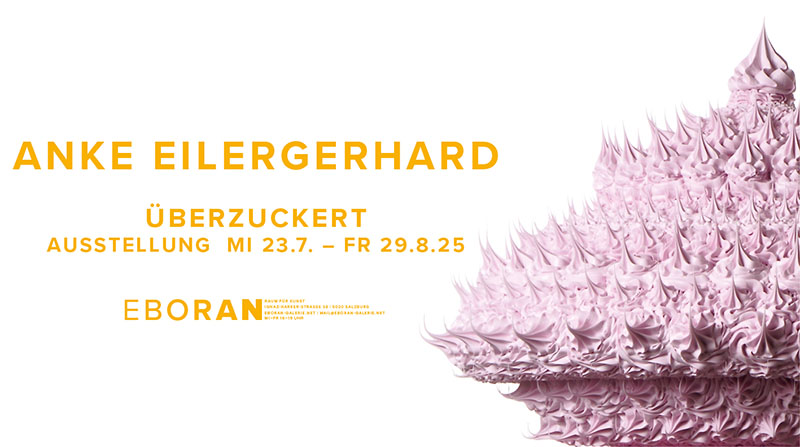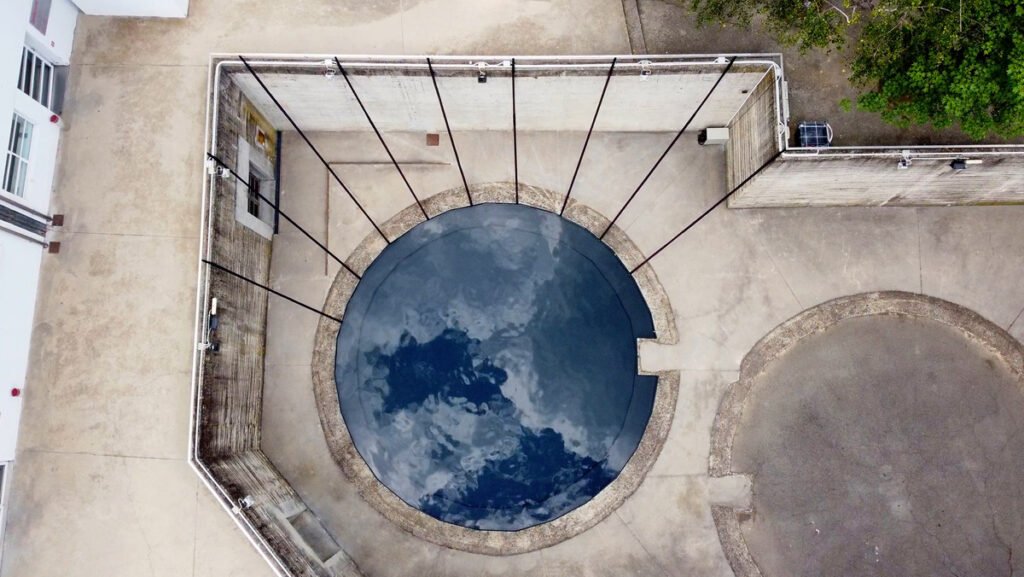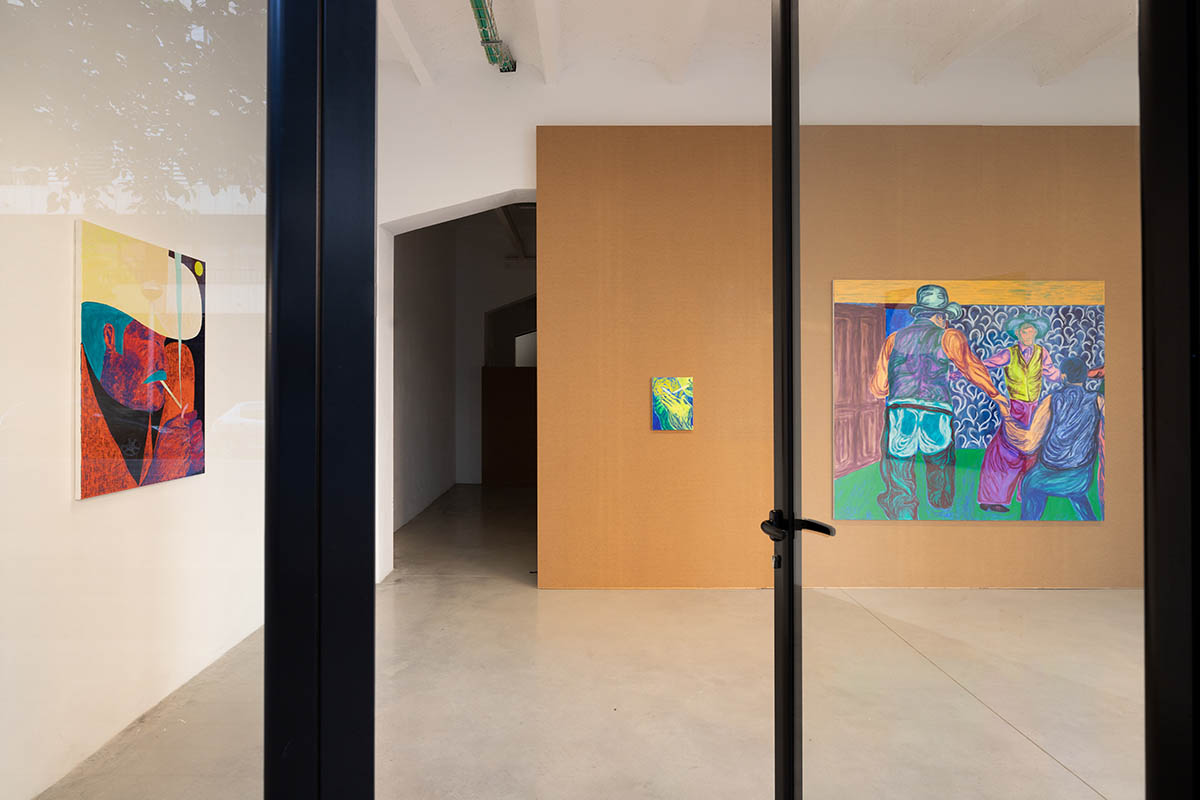
His paintings, which always exude a nostalgic air, experiment on this occasion with new techniques such as applying paint with his fingers, achieving a peculiar, blurred effect. Its yet mysterious scenes are here amplified by the smoky atmospheres that characterise this new series.
Simon Demeuter interviewed by Aina Pomar
Aina Pomar: It is not the first time that you depict cowboys in your recent series, but here we see a different approach to this motif, closer to a popular culture representation, perhaps.
For me, this series is a sequel to the series Windows on Fire. That body of work was already talking about the passage of time and the inexorable disappearance of everything, which is a recurring theme in my works. The series is based on Marlboro advertisements, mainly from the 70s. It’s two things that I have always loved: the cowboy and the cigarettes. Even though I quit smoking, I think there is a sense of attraction for this form of ultra virility, sometimes ridiculous, and which quickly switches to something that may seem homo-erotic. I also like the idea of reworking an idea that I have already approached before, but from a new perspective, and see the progress. I often put the character in the dark deliberately and use the cigarette to work the highlights and the shadows. I have always worked with solid colors and this is the first time that I see things under a different light. I really pursued an exploration in painting during this series and I had a lot of fun. Some paintings are based on photos by Erwin Evans Smith. One of them shows two Cowboys on a fence and another one depicts a group of men dancing.
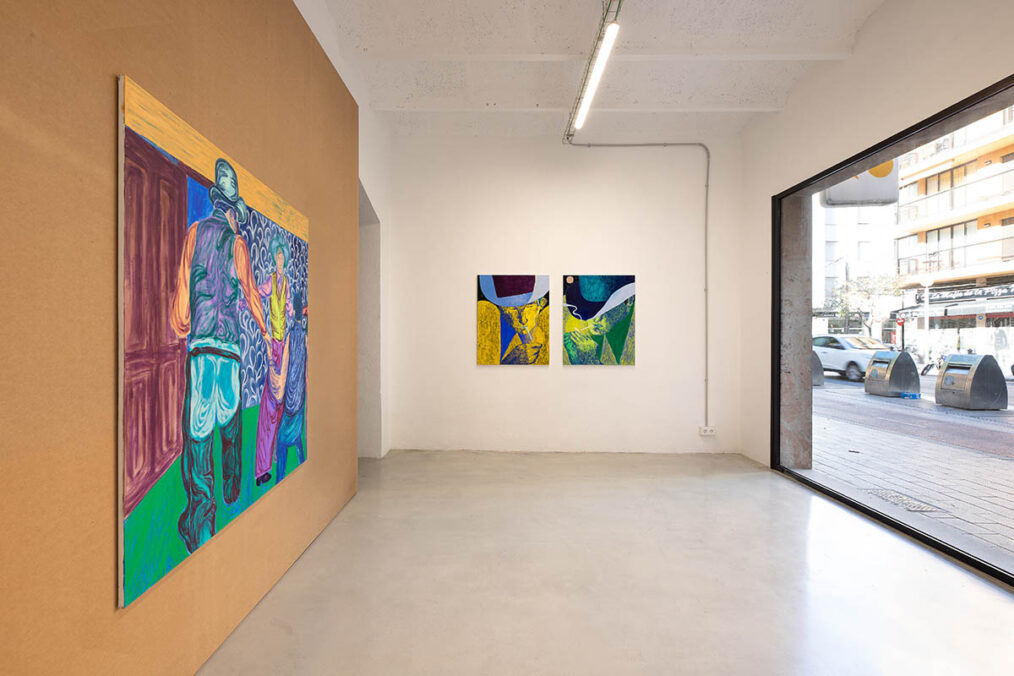
Exhibition view. Pleasure to Burn, L21 Residency, 2023 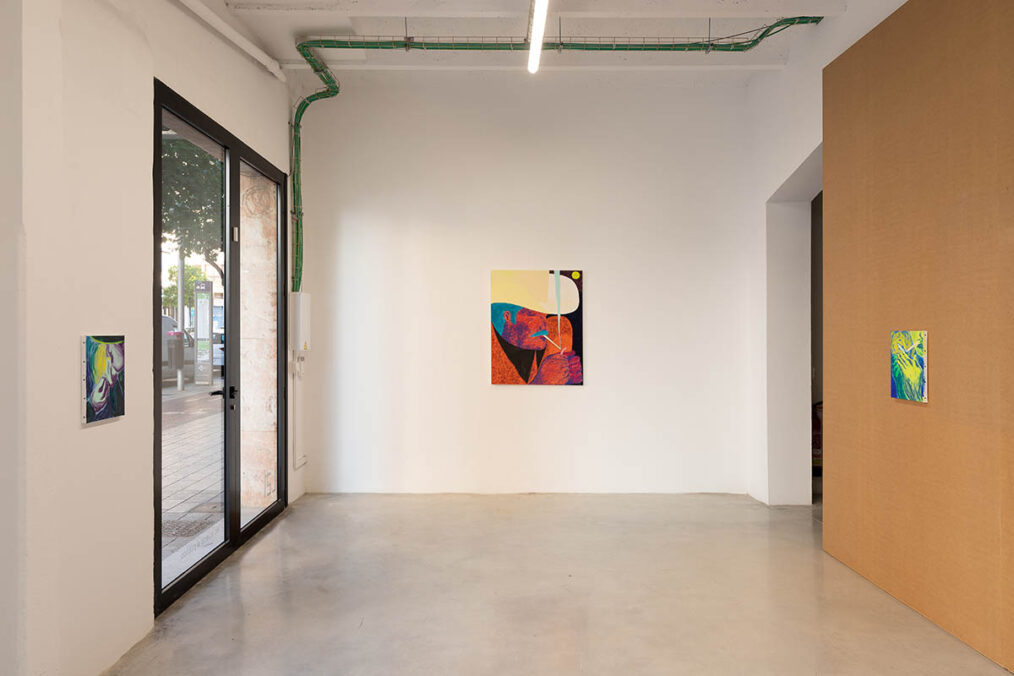
Exhibition view. Pleasure to Burn, L21 Residency, 2023
The paintings of windows on fire you refer to are from the series ‘The End of Something’ and ‘Windows on Fire’. You mentioned in the past that this series was inspired by both an embroidery you encountered at the folk art museum in New York about an attack by brigands and also by Amish quilts. Above all, as you say, in the background there is the idea of the challenge for humans to accept the fragility of our existence, the fact that everything will go away. This idea, in the context of a house, connects to the nostalgia that sometimes surrounds your paintings, such as your Ghost series from 2020. Advertisement is also a world very much connected to the language of nostalgia. What emotions do the old Marlboro ads evoke to you?
It was the idea of composition that attracted me to his advertisements. I studied graphic design and I can see the visual strategy behind. I used them to help me create the image I wanted, beyond the symbol they represent. These are beautiful images but what they tell is quite sad. The virile and free man who dominates nature. It doesn’t really suit me.
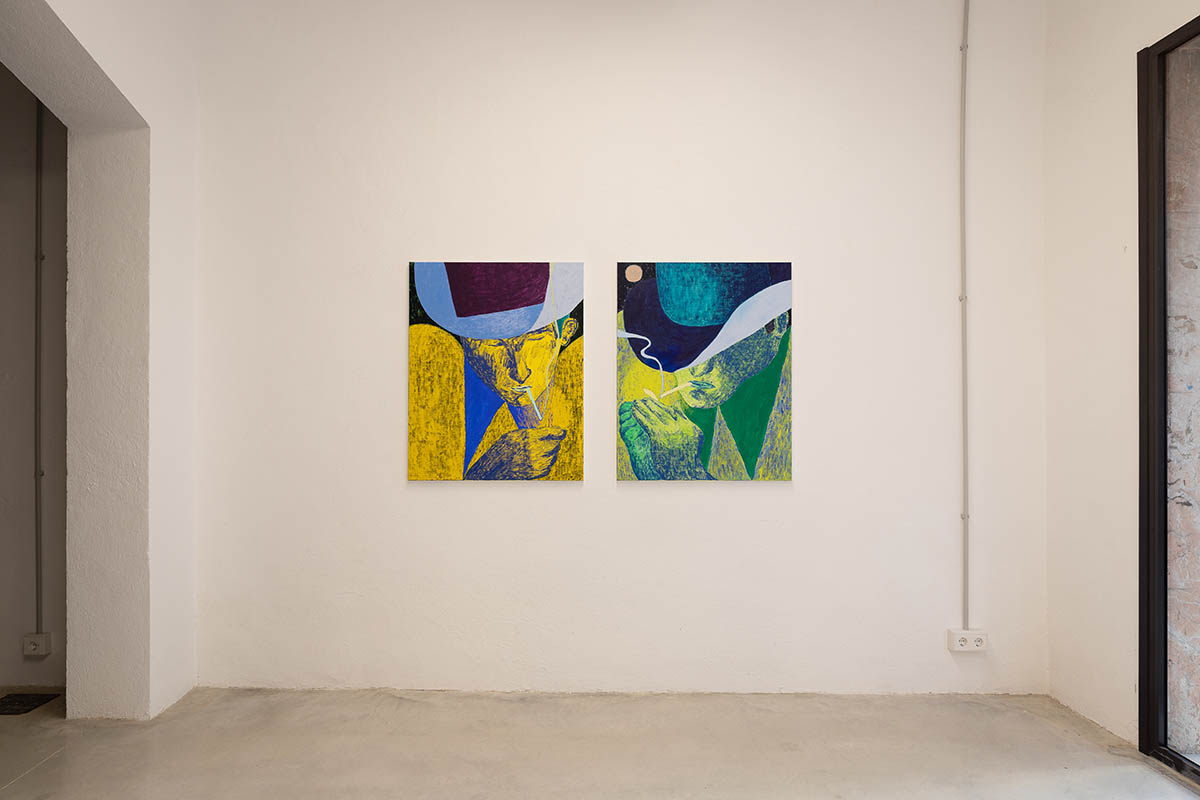
Your works often question symbols traditionally associated with masculinity or femininity through male figures and that sense of homo eroticism you’ve mentioned: the grandfather, the Greek sculptures, the gladiators…in that sense, what identity symbols are masked behind the cowboy hats and cigarettes?
I think the cowboy is a fantasy. I know it’s an image, shaped more by cinema than by reality. And the cigarette is perhaps the main subject here because it resonates more to me. The cigarette can be a metaphor for a moment, but also for the anxiety to feel something. You can drown your thoughts in that smoke. I always had a comforting relationship with cigarettes when I used to smoke.
I had a very hard time to understand it as a disappointing psychological dependence when I quitted. Perhaps the conclusion is that there is an end to everything, but you have to face it and move on.
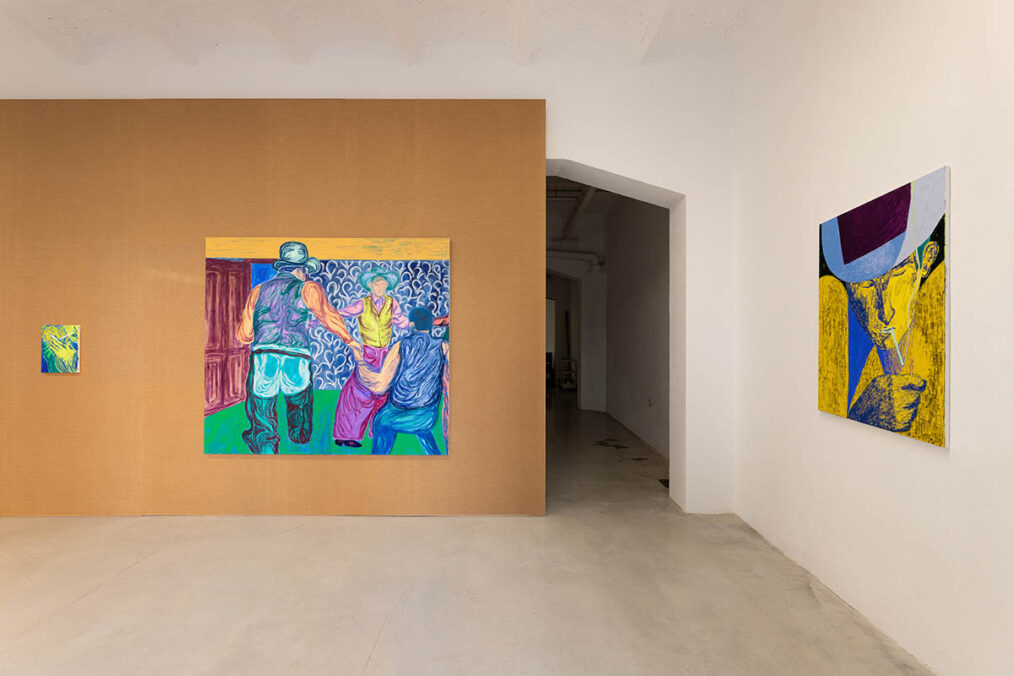
Tell us more about the change of technique in your recent works. This was something that you started exploring at your residency at Belleville. The lines are softer, the forms have become more flexible, you have painted with your fingers.
It’s something that came with time and confidence. I was ready to move on. I still have a kind of complex for not having studied painting and for having explored it on my own. However, there is something exciting to it, although frightening at the same time. The more time passes, the more I enjoy it. I hope I have succeeded in transmitting this trace of melancholy and time. There was this retrospective of Munch at Musée D’Orsay, which opened at the time of my residency. I loved the exhibition. There is a kind of melancholy, sadness and gravity from Munch and that exhibition that has always stuck with me. It inspired me for this series, especially for the paintings in which I used my fingers to paint. He was a man who was not afraid to show his weakness and madness.
The fact of moving to Paris was an important element for that change in style.
Yes. The energy is different from Brussels. Being in another landscape is very stimulating. There is a kind of challenge to be here. So many artists have lived in Paris. There is the desire to leave a mark. You have to search, get out of your comfort zone. Because the city forces you to.
Address and contact:
L21 Gallery
Arxiduc Lluís Salvador 100
07004 Palma Islas Baleares, Spain
+34 971 577 238 / l21
l21@l21gallery.com
www.l21gallery.com
Simon Demeuter (b. 1991, Soignies, Belgium) lives and works in Paris. His painting practice is inspired on childhood memories as well as from travels and encounters… His imagery conveys both an inner landscape as references to Folk Art, the Impressionists, cinema or music. Colour is the artist’s primordial tool to evoke an emotion, an impression, a sensation, a mood or a physical or mental state. Compositions and sceneries are repainted endlessly, with gestural variations in colour, size and through imperfections. In doing so, Simon tries to unearth the trace of an emotion in the simplest and most stripped way.
NEW TIMES AT L21 RESIDENCY Since 2018, the L21 Residency program offers accommodation and studio space to its participating artists. The residence space is now located on Calle Arxiduc Lluís Salvador in Palma and offers a platform from which to actively participate in the production of works of art, promote research and ’site specific‘ projects. The L21 residency program also seeks to establish links with agents and centers of the local art scene, strengthening ties with the gallery team and establishing collaborations for future projects. On April 5, 2023, we began a new stage of the L21 Residency project, including an exhibition space, visible from the street, which allows the development of creative processes to be shown to a wider public. The project opened with the exhibition „Tropical Cappuccino“ by the artist Fanny Brodar



